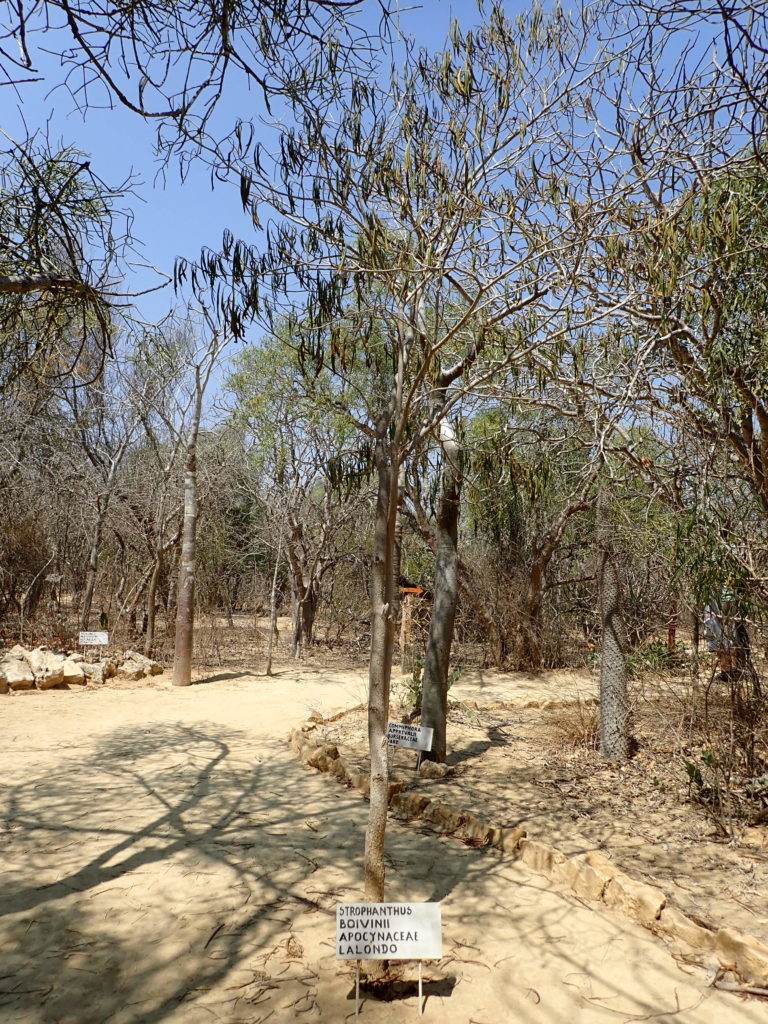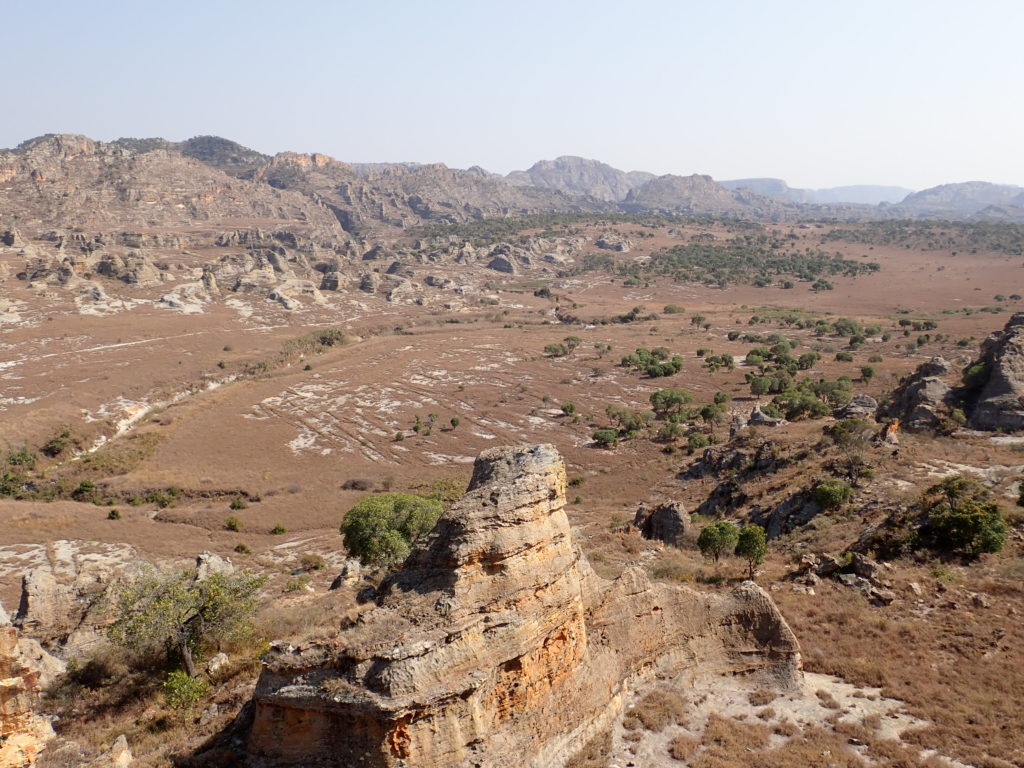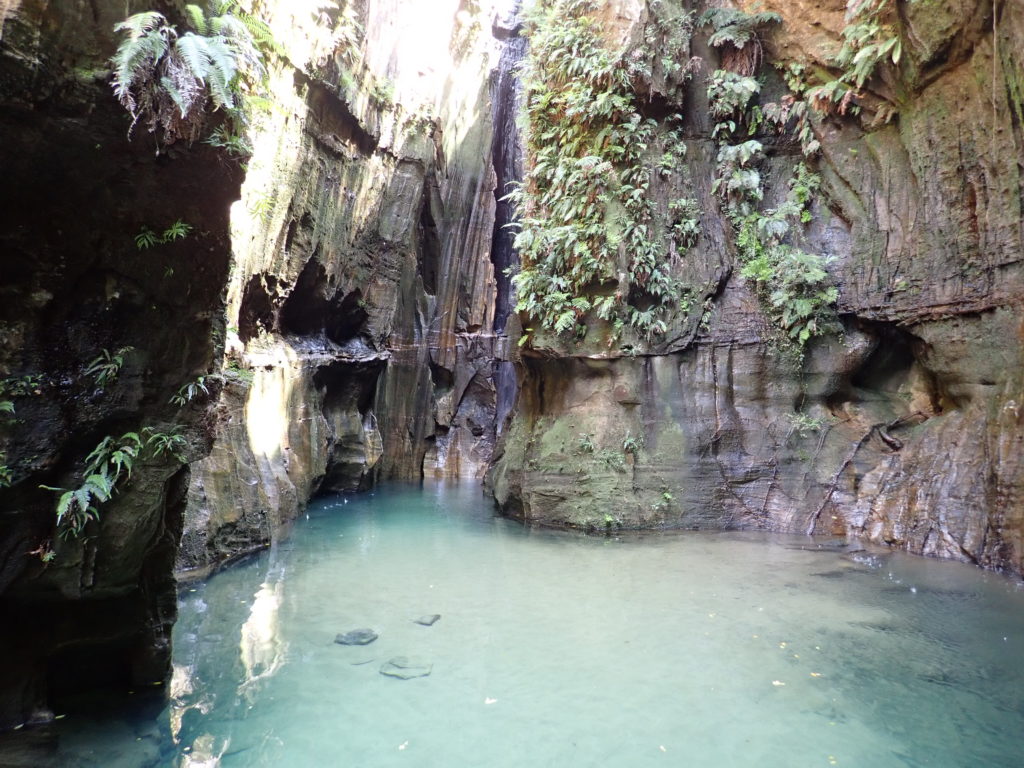Approximately fifteen kilometres east of the coastal city of Toliara, along the RN7 road, is a small place dedicated to the plants and trees of Madagascar, simply called the Arboretum. It has a decent restaurant attached to it and makes for a very nice stopover to have lunch. The tour of the Arboretum will take about one hour and you can order your meal before you take the tour to have it ready when you return. A guide will lead you through some of the more remarkable trees and plants that are endemic to Madagascar and point out which ones are used for medicinal purposes, for glue, for survival or for other things useful. September is at the end of Malagasy winter and no plants or trees were in bloom and they all looked rather withered. I suspect this place is probably best visited in Malagasy summer (rainy season) but it was still an interesting introduction to the country’s flora.

Our next stop and destination for the day was Rahonira, the village that acts as a gateway to Isalo National Park. We booked a guide to the park in the evening to make sure we could have an early start and avoid the searing heat in the afternoon. The park is one of the most visited in Madagascar and has a number of trails that lets you hike its beautiful mountain ridges and savannah-like vegetation that is typical for this part of the country. Madagascar is more or less divided into two different types of climate with the west mainly a dry area with long desert plains. This leads up to highlands in the centre that act as a boundary between the dry west and changes into lush rainforest towards the east coast. Parc National de l’Isalo is a park dedicated to the dry weather climate with its long stretches of yellow grass, sandstone formations, canyons and oases. There are three lemur species, lots of birds and interesting trees and plants, such as Pachypodium Rosulatum or Elephant’s Foot Plant, a plant growing on rocky soil that stores water in its trunk.
Starting early next day we drove to the park and discussed the possible trails with our guide. We settled on a six-hour hike along the mountain ridge that would descend into the valley and take us past waterfalls and little streams to the so-called piscine naturelle, a beautiful natural pool. The first part of the hike was therefore filled with beautiful views of barren landscapes and some simple climbing and birdwatching.

We were able to arrange lunch in the park where guides and local residents have set up a barbecue site where they will prepare a dish of rice with either zebu (the local cow) or with chicken. This site also holds the best chance to see lemurs and we’ve spotted a dozen ringtailmakis that were passing by along one of the trails. They have grown accustomed to humans and spotting them did not equal the excitement of discovering a truly wild animal but it is great for photographing and filming.
If you look closely at the final seconds of this short film, you’ll see the last maki accidentally dropping her baby and returning for it.
After lunch we headed to the piscine naturelle which was a steep descent at times and took us past small streams, which we crossed by stepping on the boulders in the water. This area was much more overgrown with trees and plants and the pool and waterfall in the end were beautiful to behold. We were the only ones to jump into the pool, the water is freezing but the short swim to the waterfall was well worth it.

This ended our hike through the park but not our plans for the day. Close to the park is a stone formation with a hole in it that aligns perfectly with the sunset. To reach it we had to go offroad for a short distance which was fun and nothing our 4×4 wasn’t able to handle. Being pressed for time we may have turned it into a rally somewhat which annoyed hikers along the sandpaths but added greatly to the overall excitement. The Fenêtre, as the rock formation is called after the French word for window, was slightly disappointing. Not for the view which was stunning but for the vast amount of people grouped together to occupy the ten square meters where the best pictures could be made. This made for an elaborate shuffle of people with large cameras and tripods moving in front of the group to claim priority and annoyed remarks from the rest and this went on and on. I joined this little dance and got a few good shots from behind the frontline while the rest just took pictures of this strange event unfolding.
The sunset itself was obscured by a large passing cloud which seemed to be nature’s rebuke to human madness.
